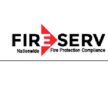
An extinguisher is one of the most important items to have on hand in the event of a fire. They are available in several designs, each tailored for a specific type of fire. If you are inexperienced with the various types of fire extinguishers and how they work, choosing the best one for your company may be tough. As a result, you should exercise caution in this manner to avoid fires from spreading.
This page discusses the many types of fire extinguishers available on the market, how they function, and when and where they should be used. In the event of an emergency, this booklet will assist you in selecting the appropriate fire extinguisher. Fire extinguishers must be maintained and inspected on a regular basis to ensure that they work successfully in the case of a fire.
Types of fire extinguishers and how they function are as follows:
1. Foam extinguishers-
These fire extinguishers can extinguish Class A and B fires. Grease, flammable liquids, and other compounds of a similar nature burn quickly and spread fires. Foam extinguishers suffocate fires by producing a layer of foam over the flames and preventing oxygen from reaching them.
Combustible materials are a good choice because they are commonly present in these types of contexts, such as industrial buildings, workshops, and garages. Because they are simple to use and maintain, foam extinguishers are a popular choice for many households and businesses.
2. Water extinguishers-
They are required for use on Class A fires, which include those made of wood, paper, cloth, and similar materials. These extinguishers put out fires by removing the fuel's heat, bringing the flames down below the ignition temperature of the substance.
A water extinguisher is your best bet when dealing with a small fire in a contained space. They also work well in the kinds of places you might expect to find them, such as private residences, businesses, and schools.
Conversely, water extinguishers should never be used on fires involving electrical equipment or flammable substances due to their extreme risks.
3. Dry powder extinguishers-
A dry powder extinguisher works on flames involving Class A, B, and C materials, including dangerous gases. These extinguishers contain a dry chemical powder that inhibits the chemical mechanism that starts a fire. When the powder is released, it forms a barrier between the oxygen and the fuel source, suffocating the flames and slowing the progress of the fire.
Dry powder extinguishers are highly good for putting out fires involving flammable liquids and gases because they do not conduct electricity and can be used on active electrical equipment. Nonetheless, they should be used cautiously because they can potentially emit a hazard if inhaled.
4. Carbon dioxide (CO2) extinguishers-
Extinguishers that use carbon dioxide (CO2) are efficient at putting out fires that involve Class B and C materials, such as flammable liquids, gases, and electrical machinery. These extinguishers successfully smother the fire by displacing the oxygen in the immediate vicinity. Moreover, these extinguishers successfully extinguish the fire. Because it is neither combustible nor conductive, carbon dioxide is the perfect gas to employ in fighting electrical equipment fires.
CO2 extinguishers are a fantastic option for usage in settings where cleanliness is a concern because they leave no residue behind. However, it is crucial to remember that CO2 extinguishers shouldn't be used on flames containing Class A materials like wood, paper, or textiles because the removal of oxygen could make the fire worse.
5. Wet chemical extinguishers-
Cooking oils and fats are Class F materials; therefore, wet chemical extinguishers are specifically made to put out fires involving these chemicals. These extinguishers function by blocking oxygen from reaching the fuel source, which helps to suffocate the flames. The hot frying oils and fats react with the wet chemical agent employed in these extinguishers, generating a layer of soap-like material that further puts out the fire and inhibits re-ignition.
Wet chemical extinguishers are frequently seen in commercial kitchens and other cooking facilities where the risk of such fires is significant due to their effectiveness on Class F flames.
Note: It is crucial to remember that using the incorrect type of extinguisher to put out a fire can be risky and potentially make the fire worse. Always be aware of the proper extinguisher type for the particular class of fire you are battling.
Having access to reputable fire extinguisher services is crucial for maintaining the safety of your property and those around you. FireServ is a premier provider of fire extinguisher services that can assist you in reducing fire risks and maintaining a secure environment. They are a fantastic option for anyone looking for a reliable and trustworthy fire extinguisher service because of their skilled experts and dedication to providing exceptional service.
So, don't take any chances when it comes to fire safety; trust FireServ for protection and peace of mind.
About the Creator
Fireserv
FireServ provides installations, maintenance, repairs, and inspections for all your fire extinguishers, alarms, sprinklers, suppression systems, emergency & exit lighting. FireServ is a Nationwide Fire Protection Compliance company.






Comments
There are no comments for this story
Be the first to respond and start the conversation.